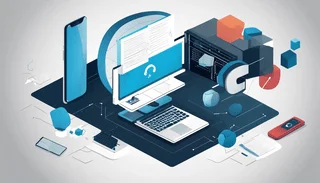Introduction to the CompTIA 220-1101 Exam
The CompTIA 220-1101 exam, part of the CompTIA A+ certification, is a crucial step for IT professionals looking to establish their expertise in hardware and networking technologies. This certification validates a candidate's ability to troubleshoot, maintain, and install hardware and software, covering various domains such as networking, mobile devices, hardware, virtualization, and cloud computing.
This exam is widely recognized and serves as a benchmark for entry-level IT support roles. Employers value CompTIA A+ certification because it ensures that candidates have the necessary skills to work with a variety of devices and technologies. Understanding the concepts covered in the CompTIA 220-1101 exam is essential for those who aspire to work in IT support, help desk roles, or any position requiring hardware and software troubleshooting knowledge.
Definition of CompTIA 220-1101 Exam
The CompTIA 220-1101 exam, also known as Core 1, is one of the two exams required to earn the CompTIA A+ certification. This exam focuses primarily on hardware, networking technology, mobile devices, cloud computing, and troubleshooting methodologies.
The key areas covered in the 220-1101 exam include:
- Mobile Devices: Installation and configuration of laptops and other mobile devices.
- Networking: Networking concepts, connections, and configurations.
- Hardware: Identification, use, and connection of hardware components and devices.
- Virtualization and Cloud Computing: Cloud computing concepts and client-side virtualization.
- Hardware and Network Troubleshooting: Troubleshooting device and network issues.
Passing this exam requires a strong grasp of these fundamental IT concepts. Candidates must understand how to work with different hardware components, configure networking devices, and troubleshoot common technical issues effectively.
Functions of a Digitizer
A digitizer is a critical component in modern touchscreen devices and input peripherals. It converts analog signals into digital signals, allowing users to interact with a device seamlessly.
Some common functions of a digitizer include:
- Touchscreen Input Processing: Digitizers translate touch inputs from fingers or styluses into digital commands that the device can interpret.
- Stylus Recognition: Advanced digitizers can recognize pressure sensitivity, tilt, and angle variations when using a stylus, improving accuracy for graphic designers and note-takers.
- Handwriting Recognition: Many devices with digitizers can convert handwritten notes into digital text using software algorithms.
- Precision and Accuracy: High-quality digitizers provide precise input, which is essential for artists, engineers, and professionals using CAD software.
- Multi-Touch Functionality: Digitizers allow multi-touch gestures, such as pinch-to-zoom, swiping, and rotating, enhancing user experience in mobile devices and tablets.
Digitizers are widely used in smartphones, tablets, laptops with touchscreens, graphic tablets, and digital drawing boards. Understanding their function is essential for IT professionals, as they may need to troubleshoot digitizer-related issues in touchscreen devices.
Common Misconceptions (Incorrect Answers)
Many test-takers fall into traps when answering questions about digitizers on the CompTIA 220-1101 exam. Here are some common misconceptions:
- A digitizer is only used in graphic tablets.
- While graphic tablets use digitizers, they are also present in touchscreen devices like smartphones, laptops, and tablets.
- A digitizer is the same as a touchscreen.
- The touchscreen is the physical display, while the digitizer is the component that translates touch inputs into digital signals.
- Styluses work on all touchscreens.
- Not all touchscreens support stylus input; only those with active digitizers can recognize stylus pressure sensitivity and angles.
- A digitizer does not affect screen responsiveness.
- The quality of a digitizer directly impacts how responsive a touchscreen device is to user inputs.
- All digitizers are the same.
- There are different types of digitizers, such as resistive and capacitive, each with unique characteristics and functionalities.
Being aware of these misconceptions can help candidates answer questions more accurately and avoid common pitfalls.
Exam Tips for Answering Digitizer-Related Questions
Success in the CompTIA 220-1101 exam requires a strategic approach. Here are some valuable tips for answering digitizer-related questions:
- Understand the Basics: Ensure you know what a digitizer is, how it functions, and its various applications in IT hardware.
- Differentiate Between Types of Digitizers: Be able to distinguish between capacitive and resistive digitizers, as well as passive and active styluses.
- Read Questions Carefully: Many exam questions include distractors or similar-sounding terms, so always double-check before selecting an answer.
- Apply Real-World Knowledge: If you have experience with smartphones, tablets, or graphic tablets, use that knowledge to answer questions based on practical understanding.
- Use the Process of Elimination: If you are unsure about an answer, eliminate incorrect options first to improve your chances of choosing the right one.
- Practice with Mock Exams: Utilize practice tests from reliable sources like DumpsBoss to familiarize yourself with digitizer-related questions.
By applying these strategies, candidates can improve their accuracy and confidence when answering questions about digitizers in the exam.
Conclusion
The CompTIA 220-1101 exam is a gateway for IT professionals looking to advance their careers in hardware and networking. Understanding key components like digitizers is essential, as they play a crucial role in touchscreen devices and digital input technologies. By mastering the functions of a digitizer, recognizing common misconceptions, and employing effective exam strategies, candidates can increase their chances of passing the exam.
For additional study resources and practice exams, DumpsBoss offers high-quality materials designed to help candidates succeed. Leveraging these resources ensures thorough preparation and a higher probability of achieving certification success. Start your CompTIA 220-1101 exam journey today with DumpsBoss and take a confident step toward a promising IT career!
Special Discount: Offer Valid For Limited Time “220-1101 Exam” Order Now!
Sample Questions for CompTIA 220-1101 Dumps
Actual exam question from CompTIA 220-1101 Exam.
Which of the following answers refer to the function of a digitizer? (Select 3 answers)
A. Converts analog input into digital format
B. Displays digital images on a screen
C. Captures handwritten signatures and drawings
D. Acts as a pointing device like a mouse
E. Processes audio signals for conversion


